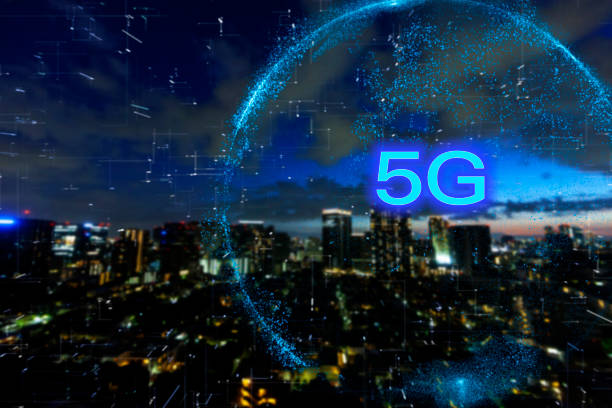The advent of 5G technology marks a significant leap forward in the realm of communication, promising faster speeds, lower latency, and greater connectivity than its predecessors. As the fifth generation of mobile networks continues to roll out globally, its evolution and implications are reshaping various aspects of communication and technology.

1. From 1G to 5G: A Brief History
Mobile communication has evolved through several generations, each offering improved capabilities. 1G introduced analog voice calls, followed by 2G’s digital voice and text messaging capabilities. 3G enabled mobile internet access and multimedia services, while 4G enhanced data speeds, paving the way for streaming and high-definition video calls. Now, 5G represents a leap into the era of ultra-fast, low-latency connectivity, capable of supporting a vast array of connected devices and applications.
2. Key Features of 5G Technology
5G technology boasts several key features that distinguish it from previous generations:
- Enhanced Speeds: 5G networks promise speeds up to 100 times faster than 4G, with peak data rates reaching several gigabits per second. This enables quicker downloads, smoother streaming, and reduced latency for real-time applications.
- Lower Latency: Latency, or the delay between sending and receiving data, is significantly reduced in 5G networks, making it ideal for applications requiring instantaneous responsiveness, such as autonomous vehicles and remote surgery.
- Increased Capacity: 5G networks can accommodate a massive number of connected devices per square kilometer, supporting the Internet of Things (IoT) and smart city initiatives without compromising performance.
3. Implications for Communication
The implications of 5G technology extend beyond faster internet speeds. It is poised to revolutionize communication in several ways:
- Enhanced Mobile Experiences: Users will enjoy seamless, high-definition video calls, immersive augmented reality (AR), and virtual reality (VR) experiences, transforming how we interact and communicate.
- IoT and Smart Devices: 5G’s robust connectivity will accelerate the adoption of IoT devices in homes, industries, and cities. Smart appliances, autonomous vehicles, and connected healthcare devices will become more prevalent, enhancing efficiency and convenience.
- Business and Industry: Industries such as manufacturing, logistics, and agriculture will benefit from 5G’s low-latency connectivity, enabling real-time monitoring, predictive maintenance, and efficient operations.
- Telemedicine and Remote Work: Healthcare providers can leverage 5G for remote consultations, medical imaging, and telemedicine applications, improving access to healthcare services globally. Similarly, remote work capabilities will be enhanced with reliable, high-speed connectivity.
- Edge Computing: 5G networks facilitate edge computing, enabling data processing closer to the source (e.g., IoT devices), reducing latency and enhancing privacy and security.

4. Challenges and Considerations
While 5G promises numerous benefits, challenges and considerations remain:
- Infrastructure Deployment: Deploying 5G infrastructure requires significant investment in new towers, small cells, and fiber-optic networks. Rural areas and developing regions may face challenges in accessing 5G services.
- Security Concerns: As more devices connect to 5G networks, cybersecurity becomes a critical concern. Ensuring robust security measures and protocols is essential to protect data and privacy.
- Regulatory Issues: Spectrum allocation and regulatory frameworks vary globally, impacting the rollout and accessibility of 5G networks across different regions.
5. Future Outlook
The evolution of 5G technology is poised to transform communication and technology landscapes globally. As deployment continues and technology advancements unfold, 5G will unlock new opportunities for innovation, economic growth, and societal advancement. Industries, businesses, and individuals alike stand to benefit from the unprecedented connectivity and capabilities offered by 5G networks.

Conclusion
In conclusion, the evolution of 5G technology represents a pivotal moment in the history of communication. With its unparalleled speed, low latency, and capacity to support diverse applications, 5G is set to redefine how we connect, communicate, and interact in the digital age. Embracing the opportunities and addressing the challenges associated with 5G will pave the way for a more connected, efficient, and innovative future.

